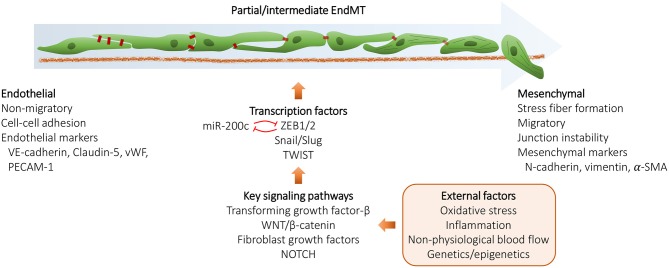Figure 1.
Schematic representation of the endothelial to mesenchymal transition (EndMT) process. During EndMT, endothelial cells lose endothelial cell features and acquire mesenchymal cell markers, resulting in junction instability, enhanced vascular permeability, and potentially cellular senescence. EndMT can be triggered by various external factors and involves signaling pathways, such as TGF-β, WNT/β-catenin, FGFs and NOTCH that converge and induce the expression of EndMT transcription factors ZEB1/2, Snail, Slug, and TWIST. EndMT/EMT may also be regulated by a number of microRNAs, the key microRNA family being miR-200 family that acts by suppressing ZEB1 and ZEB2 mRNA expression by a negative feedback loop.

